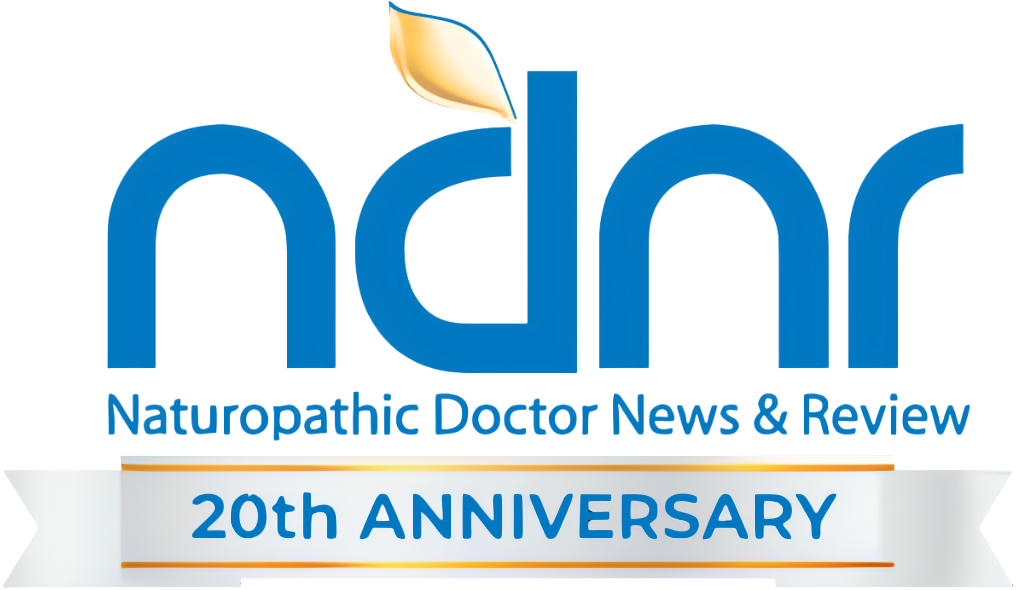Darla L. Logan, NMD, MBA
The pain of osteoarthritis (OA) can strike any joint, but it seems to be more common in joints that take the brunt of weight-bearing; the most commonly affected joint is the knee. According to the Centers for Disease Control and Prevention (CDC), arthritis is the top cause of disability in the United States, and OA is the #1 type of arthritis causing disability.1 An estimated 52.5 million people suffer from arthritis.1 One out of every 2 people in the US population is expected to suffer from OA by age 85,2 and while the majority of OA diagnoses are in people 65 years of age and older, the CDC reports that in 2014 nearly two-thirds of the reported cases of OA were in persons younger than age 65.1 The question isn’t will you see patients with OA in your office; the question is when?
Osteoarthritis is said to have a gradual onset of pain, stiffness, grating or clicking, loss of flexibility, and bone spurs. Conventionally, the options for OA treatment are limited to pain relief through the use of analgesics, steroid injections, hyaluronic acid injections and, eventually, complete joint replacement. Obviously, the extent and progression of the disease involves many variables, and we know that overall health, history of overuse injuries, prolonged high-impact activities, obesity, and age are certainly factors in degradation of cartilage in the joint leading to OA. The question is: how do we effectively treat the breakdown of cartilage and facilitate proliferation of chondrocytes to repair the damage? In answer to the question, platelet-rich plasma and stem cell treatments have emerged as viable and effective regenerative medicine treatments for mild-to-severe OA.
Platelet-Rich Plasma for OA
In OA, there is degradation of the articular cartilage. This cartilage is predominantly made up of type II collagen. It’s smooth and slippery, like glass. It provides cushioning at articulation, and allows a smooth gliding action of the joint. When the cartilage begins to break down due to factors like overuse, high impact, and age, we get a breakdown of cartilage, causing pain. Autologous platelet-rich plasma (PRP) has shown promising results in studies,3,4 although the outcomes are varied due to the lack of standardization of preparation practices of PRP. Clinically speaking, the results seen in-office using PRP to treat OA have been overwhelmingly positive.
PRP is a non-surgical regenerative medicine treatment used to speed the regrowth and healing of injured or damaged tissues. PRP is composed of a high concentration of platelets and growth factors that are responsible for initiating innate healing of the treated areas. Autologous PRP is created by drawing the patient’s blood and then using a specific process of centrifugation that uses a high G-force spin-rate to separate a high concentration of platelets and growth factors. These are then re-suspended in a small amount of plasma and injected into the specific injured joint and supporting tissues. In the case of OA, injections are most commonly intra-articular. PRP has been shown stimulate the growth of chondrocytes and down-regulate the factors leading to cartilage degradation. Cartilage growth of even 1 mm will influence the joint to decrease pain and reduce swelling.
The Power of Platelets in Wound Healing
Platelets, in general, play a key role in wound healing. Platelets are sticky and thus help to prevent blood loss in vascular injury. Because they are sticky, platelets adhere to and aggregate to create a surface that promotes thrombin and fibrin formation – a prerequisite to clot formation. According to Nurden, in an article published in Frontiers in Bioscience,5
Although anucleate, activated platelets possess a spliceosome and can synthesize tissue factor and interleukin-1beta. The binding of secreted proteins within a developing fibrin mesh or to the extracellular matrix can create chemotactic gradients favoring the recruitment of stem cells, stimulating cell migration and differentiation, and promoting repair.
Platelets are trapped in the fibrin mesh and release growth factors, which not only promote tissue repair but “influence processes such as angiogenesis, inflammation and immune response.”5
Platelets are rife with growth factors and serve as a storage for many proteins, including platelet-derived growth factor (PDGF), transforming growth factor (TGF), platelet factor interleukin (IL), platelet-derived angiogenesis factor (PDAF), vascular endothelial growth factor (VEGF), epidermal growth factor (EGF), insulin-like growth factor (IGF), and fibronectin. Platelets release these active proteins and metabolites, which induce tissue-factor signaling to initiate inflammation, along with interleukins that bind to developing fibrin. This binding produces chemotactic gradients that recruit stem cells to the area. The platelets “turn on” these local stem cells, causing them to migrate and differentiate, which promotes repair. In addition, the fibrin clot that is created by the platelets promotes rapid healing.
TGF-β1 and IL-1 play an integral part in up-regulation and down-regulation, respectively,6,7 of a glycoprotein that is secreted by chondrocytes, called superficial zone protein (SZP), also known as lubricin or proteoglycan-4 (PRG4), which helps lubricate the joints. SZP is characteristic in articular cartilage, and thus is found in higher concentrations in load-bearing joints. It has an important role in homeostasis and the maintenance of functional integrity of diarthroidal joints. IL-1 also stimulates the expression of matrix metalloproteinases (MMPs) and aggrecanases, which are considered the main enzymes responsible for cartilage degradation.8 In patients with OA, the MMPs are overexpressed. TGF-β1 counteracts the effects of IL-1 and restores joint homeostasis.9 The platelets and plasma in PRP have therapeutic benefit by inducing cell proliferation and remodeling, restoring homeostasis in the joint, and stimulating synoviocyte production of hyaluronic acid.10
PRP Protocols
In mild-to-moderate cases of OA, patients can expect to be treated 3 to 6 times, approximately 4 weeks apart, in accordance with the natural wound-healing cycle. In severe cases of OA, it’s not uncommon to require more than 6 treatments to see benefit. There are multiple factors that influence healing with PRP, including age, severity of disease, previous treatments used, hormone status, overall health and wound-healing ability, current medications, and smoking status.
For about 48-72 hours following PRP injection, the inflammatory phase of wound healing is in effect. During this time, there can be varying amounts of stiffness, minor swelling, and aching pain. Within 3-5 days post-injection, the proliferation phase of wound healing begins, resulting in new tissue formation. This will continue for 21-28 days. During this time, symptoms of OA can vary from unchanged to markedly improved, and it’s not uncommon to experience a waxing and waning of symptoms. The results from a single treatment are likely to vary by individual.
PRP-Enhancing Measures
Effectiveness of PRP treatment may be increased by utilizing additional naturopathic treatments to support healing. While the use of ice on the treated area will shut down healing in PRP by blocking the inflammatory phase, the use of alternating hot and cold hydrotherapy may be used to increase circulation. Other methods of increasing circulation include exercise, such as swimming, bicycling, walking, and physiotherapeutic modalities including E-stim and TENS.
Acupuncture can be beneficial in reducing after-treatment pain, stimulating qi, reducing stagnation, and providing overall support of wound healing. Hormone balance will increase the effectiveness of wound healing, so is worth considering in both male and female patients. In addition, consider herbs that support increased circulation, such as ginger, as well as enzymes that clean up cellular waste, such as serrapeptase. Nutritional counseling for weight loss is an important part of any treatment, and since OA is significantly exacerbated by obesity, losing weight will directly impact the affected weight-bearing joint, as well as the patient’s overall health by creating a favorable environment for healing. (While PRP in and of itself is an extremely powerful and effective treatment, creating an optimal environment for healing will enhance healing and overall health.) Proper nutrient balance is imperative in healing. Consider using vitamins D, C, and E, manganese, omega-3 fatty acids, glucosamine sulfate, chondroitin sulfate, methylsulfonylmethane (MSM), and pantothenic acid11 as part of an overall treatment plan that may increase the effectiveness of PRP.
While many treatments can be used to help control pain, regenerative medicine treatments such as PRP are effective in facilitating tissue regrowth and providing a mechanism for utilizing the body’s innate ability to heal the underlying condition, as opposed to merely palliation of pain. The power of healing encompassed in the body, stimulated by injections of PRP, is the beauty of the treatment, and in many cases will prolong or avoid the need for surgeries such as joint replacement or spinal fusion.
 Darla L. Logan, NMD, MBA, earned her Bachelor of Business in Computer Business Systems and Master of Business Administration in Finance from NM State University. She earned her Doctorate of Naturopathic Medicine from SCNM. In her practice, Dr Logan treats a variety of health concerns and focuses on regenerative medicine and injection therapies. She has appeared in national publications, has an extensive background in public speaking, and is active in bringing health education to underserved communities. Prior to beginning her medical training, she was a successful business owner and technical consultant working with corporate executives to improve business processes and complete major projects. She has made a career out of solving problems and works closely with her patients to address their health concerns.
Darla L. Logan, NMD, MBA, earned her Bachelor of Business in Computer Business Systems and Master of Business Administration in Finance from NM State University. She earned her Doctorate of Naturopathic Medicine from SCNM. In her practice, Dr Logan treats a variety of health concerns and focuses on regenerative medicine and injection therapies. She has appeared in national publications, has an extensive background in public speaking, and is active in bringing health education to underserved communities. Prior to beginning her medical training, she was a successful business owner and technical consultant working with corporate executives to improve business processes and complete major projects. She has made a career out of solving problems and works closely with her patients to address their health concerns.
References:
- Centers for Disease Control and Chronic Disease Prevention and Health Promotion. Arthritis: Meeting the Challenge of Living Well. Updated February 18, 2015. CDC Web site. http://tinyurl.com/2boafkb. Accessed May 19, 2015.
- Murphy L, Schwartz TA, Helmick CG, et al. Lifetime risk of symptomatic knee osteoarthritis. Arthritis Rheum. 2008;59(9):1207-1213.
- Holguin E. Platelet-rich plasma injection is more effective than hyaluronic acid in the treatment of knee osteoarthritis. Orthop J Sports Med. 2014;2(4 Suppl).
- Hegab AF, Ali HE, Elmasry M, Khallaf MG. Platelet-Rich Plasma Injection as an Effective Treatment for Temporomandibular Joint Osteoarthritis. J Oral Maxillofac Surg. 2015 Mar 24. pii: S0278-2391(15)00337-7.
- Nurden A. Platelets and wound healing. Front Biosci. 2008;13:3532-3548.
- Lee SY, Niikura T, Reddi AH. Superficial zone protein (lubricin) in the different tissue compartments of the knee joint: modulation by transforming growth factor beta 1 and interleukin-1 beta. Tissue Eng Part A. 2008;14(11):1799-1808.
- Sakata R, McNary SM, Miyatake K, et al. Stimulation of the superficial zone protein and lubrication in the articular cartilage by human llatelet-rich plasma. American J Sports Med. 2015;43(6):1467-1473.
- Pujol J, Chadjichristos C, Legendre F et al. Interleukin-1 and transforming growth factor-beta 1 as crucial factors in osteoarthritic cartilage metabolism. Connect Tissue Res. 2008;49(3):293-297.
- van den Berg WB, van der Kraan PM, Scharstuhl A, van Beuningen HM. Growth factors and cartilage repair. Clinical Orthop Relat Res. 2001;(391 Suppl):S244-S250.
- Sánchez M, Fiz N, Guadilla J, et al. Intraosseous infiltration of platelet-rich plasma for severe knee osteoarthritis. Arthrosc Tech. 2014;3(6):e713-e717.
- Gaby A. Nutritional Medicine. Concord, NH: Fritz Perlberg Publishing; 2011:587-592.


